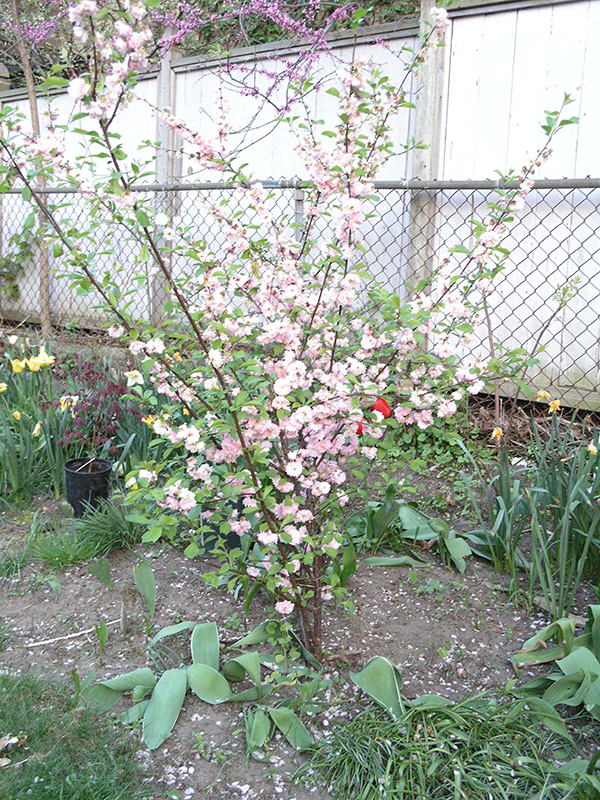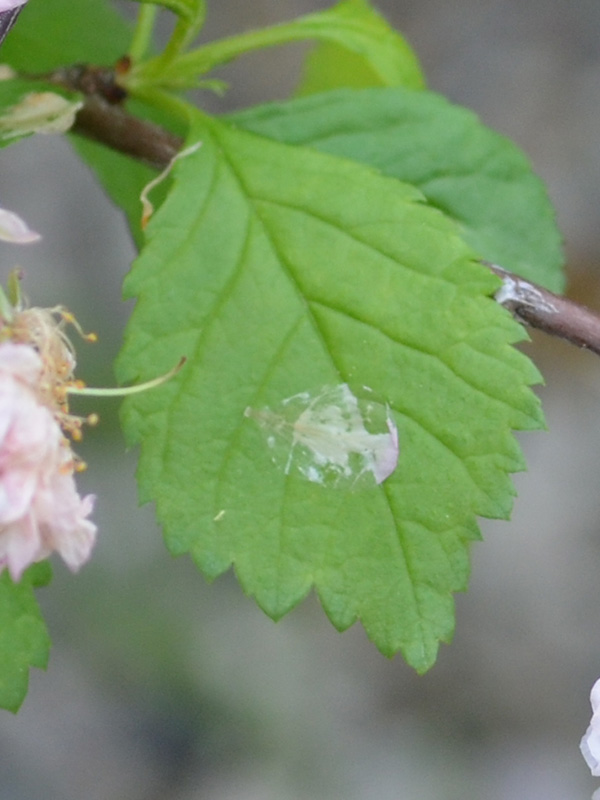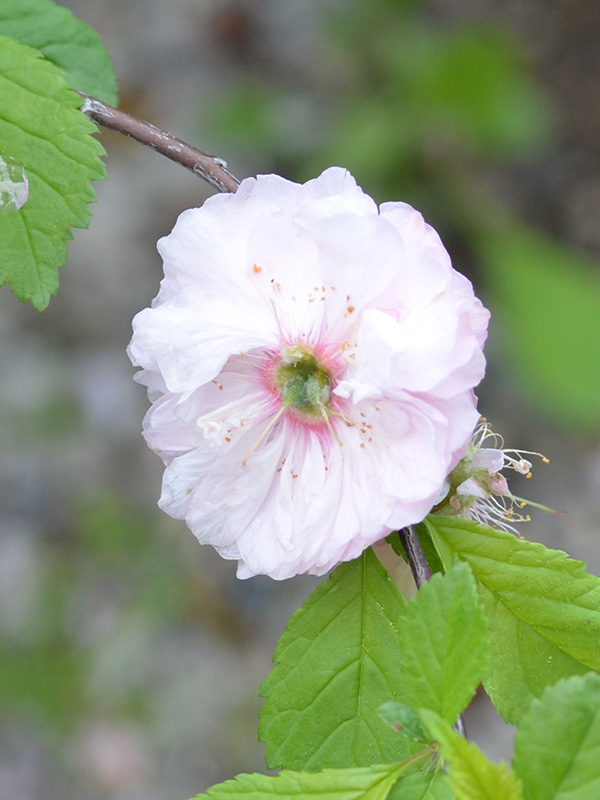
Woody > Prunus > Prunus triloba > Prunus triloba 'Multiplex'
Prunus triloba
'Multiplex'
Double Flowering Almond
Origin: The species originates from China and was introduced into cultivation in 1885.
Mike's
Opinion


"
The Flowering Almond is impressive when in flower, but otherwise has a rather awkward almost scrubby appearance. It can be pruned and trained to fit various functions in the landscape and but its maintenance is otherwise low; a back of the border type plant. It is very hardy, rarely affected by pests or diseases, and tolerant of an urban environment which makes it a worthwhile consideration for the landscape. Birds, butterflies and small animals are attracted to the pink pompom-like flowers and add value to its use in the garden.
Michael Pascoe, NDP., ODH., CLT., MSc. (Plant Conservation)
"
| Family |
| Rosaceae |
| Genus |
| Prunus |
| Species |
| triloba |
| Cultivar |
| 'Multiplex' |
| Category |
| Woody |
| Type |
| Shrub (deciduous) |
| Pronunciation |
| USDA Hardiness Zone |
| 3 - 7 |
| Canadian Hardiness Zone |
| 1a - 7a |
| RHS Hardiness Zone |
| H5 - H7 |
| Temperature (°C) |
| -40 - (-34) |
| Temperature (°F) |
| -40 -(-30) |
| Height |
| 3 - 4.6 m |
| Spread |
| 3 - 4.6 m |
Photographs
Description and Growing Information
Flowering Period
| General Description |
| It is generally small and round with showy double white-pink flowers. |
| Landscape |
| It can be used as a hedge, massing or a specimen shrub, however since it is rather a drab plant when not in flower it is best relegated to the back of the border. |
| Cultivation |
| It needs regular pruning to maintain good form and remove dead branches it can however be trained into a specific form. It tolerates cold temperatures and dry acidic soils, but grows best in moist, well-drained loamy soil in full sun to partial shade. |
| Shape |
| It has a dense, multi-stemmed, rounded form. |
| Growth |
| Medium |
| ID Characteristic |
| It identified by its profuse double pink-white flowers and tri-lobed leaves. |
| Pests |
| Plum Pox: Symptoms may be confused with other diseases/disorders such as nutrient deficiencies or pesticide injuries. PPV symptoms can occur on leaves, flowers and/or fruit. Faint yellow rings or lines may be found on the leaves. PPV generally does not cause plant mortality however, can reduce the plant productivity and longevity. How to Reduce the Spread and Impact of PPV: 1. Propagate vulnerable Prunus trees and shrubs outside of the affected area a. Isolation is important to protect clean plants from future spread of the disease. b. Propagating and growing vulnerable plants away from the virus-infected area reduce the likelihood of the disease spreading any further. This should be as far away from the quarantined area and any potential sources of the virus. 2. Propagate Prunus plants with virus-free Budwood and Rootstock from virus tested mother trees a. This eliminates the propagation link for viral diseases. 3. Inspect vulnerable Prunus for symptoms a. All Prunus shrubs and trees should be visually inspected for symptoms at lease twice per year and conducted by trained personnel familiar with the virus. b. Any plants found to be infected should not be moved or sold and must be reported to the Canadian Food Inspection Agency immediately. c. Inspections should not be conducted in periods of hot weather (temperatures over 30?C). 4. Manage aphid vectors a. Aphids are extremely attracted to suckers (vegetative shoots at the base of the tree), these should be removed to avoid aphid colonization, feeding or migration. 5. Plant tolerant and resistant varieties a. When available, grow plum pox tolerant or resistant Prunus varieties. |
| Habitat |
| Horticultural origin. |
| Bark/Stem Description |
| Young stems are covered in fine hairs and become smooth and dark reddish brown with age. The lenticels are horizontal and prominent. The bark is not particularly remarkable. |
| Flower/Leaf Bud Description |
| The buds are approximately 50 mm long, ovate with a pointed tip, and have dark brown overlapping scales. The flower buds are dark rosy pink and round with medium to dark green sepals and are usually clustered around the nodes. |
| Leaf Description |
| The leaves are approximately 2.5 – 5.6 cm long and 1.9 – 3.2 cm wide and are broadly elliptical or obovate. The base is broadly cuneate to acuminate or sometimes tri-lobed at the tip, hence the species name. The leaf margins are coarse and doubly serrate while the underside of the leaf is slightly pubescent. The petiole is 1.3 cm long and often has thread like stipules. Foliage turns yellow in autumn. |
| Flower Description |
| The flowers are perfect but sterile, white-pink, with two rows of five petals which are approximately 2.5–3.8 cm wide. It blooms in April/May depending on zone but sometimes a late frost will kill the flower buds. |
| Fruit Description |
| It is not a fruit bearing cultivar since the flowers are sterile. |
| Colour Description |
| In summer the foliage is medium green and turns yellow to bronze in autumn. The bark is dark reddish brown and the buds are dark brown. Flowers are light pink often fading to white. |
| Texture Description |
| It is medium to fine textured plant. |
| Propagation |
| It is usually propagated by grafting a scion onto a 1.5 m long stem of Prunus tomentosa understock to form a standard, shrub forms are propagated by cuttings. |



